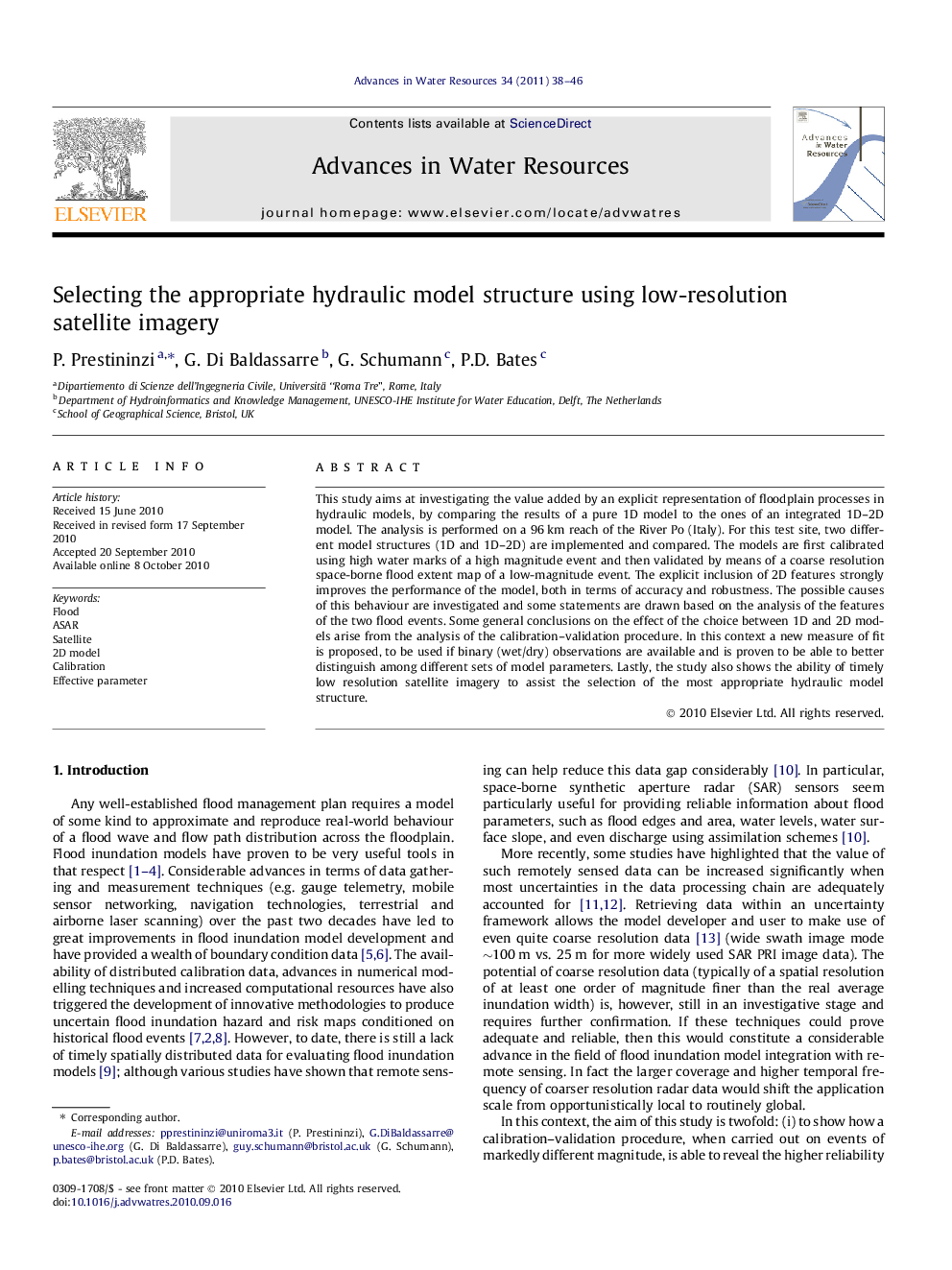| Article ID | Journal | Published Year | Pages | File Type |
|---|---|---|---|---|
| 4526250 | Advances in Water Resources | 2011 | 9 Pages |
This study aims at investigating the value added by an explicit representation of floodplain processes in hydraulic models, by comparing the results of a pure 1D model to the ones of an integrated 1D–2D model. The analysis is performed on a 96 km reach of the River Po (Italy). For this test site, two different model structures (1D and 1D–2D) are implemented and compared. The models are first calibrated using high water marks of a high magnitude event and then validated by means of a coarse resolution space-borne flood extent map of a low-magnitude event. The explicit inclusion of 2D features strongly improves the performance of the model, both in terms of accuracy and robustness. The possible causes of this behaviour are investigated and some statements are drawn based on the analysis of the features of the two flood events. Some general conclusions on the effect of the choice between 1D and 2D models arise from the analysis of the calibration–validation procedure. In this context a new measure of fit is proposed, to be used if binary (wet/dry) observations are available and is proven to be able to better distinguish among different sets of model parameters. Lastly, the study also shows the ability of timely low resolution satellite imagery to assist the selection of the most appropriate hydraulic model structure.
Research highlights► 1D hydraulic models cannot be calibrated and applied to events with different magnitudes. ► 1D roughness parameters are not sufficient to simulate different 2D overbank flows. ► 1D-2D models provide more accurate results when floodplain flows are present. ► Low-res ASAR imagery can be successfully used to choose between different model structures.
